
P-43 Lancer
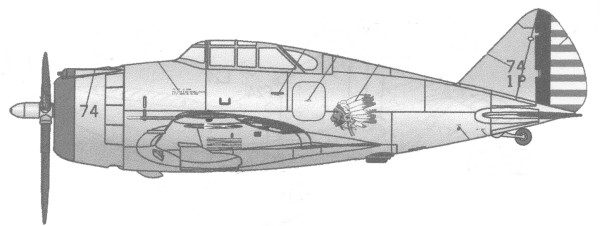

P-43 Lancer

By 1942, a total of 272 P-43s were built, including all its variants, a remarkable number considering the original intention was to not build any.
The Lend-Lease aircraft were delivered to China through Claire Chennault's American Volunteer Group, the Flying Tigers. Pilots involved in the ferrying flights commended the P-43 for its good high-altitude performance compared to the Curtiss P-40, good roll rate, and a radial engine without a vulnerable liquid cooling system. Apparently, several AVG pilots asked Chennault to keep some P-43s, but the request was denied due to the aircraft's lack of armor or self-sealing fuel tanks. In addition, the turbo-supercharger proved unreliable and the "wet wing" fuel tanks leaked constantly. In April 1942, Robert Lee Scott Jr. — a USAAF pilot with the AVG —photographed the peaks of Mt. Everest from 44,000 ft (13,000 m), attesting to the strengths of this aircraft.
The type was replaced by other aircraft in early 1944. Rudimentary protection added on the P-43A-1 was insufficient. In addition, the R-1830 engines were in high demand for the Douglas C-47 transport, effectively grounding the surviving aircraft.
The USAAC considered the P-43 and its variants obsolete from the start and used them only for training purposes. In fall 1942, all surviving USAAF (transitioned from USAAC in June 1941) P-43s were redesignated RP-43, indicating they were unfit for combat. Most of the aircraft that were not sent to China were modified for photo-reconnaissance duties and used for training. Eight P-43s (four P-43A-1s and four P-43Ds) were loaned to the Royal Australian Air Force in 1942 and served with No. 1 Photo Reconnaissance Unit. The RAAF flew many long range, high-altitude photo reconnaissance missions before the six survivors were returned to the USAAF in 1943. A more complete and well researched article of the P-43's use in China by Richard Dunn can be found here.
The
Kit
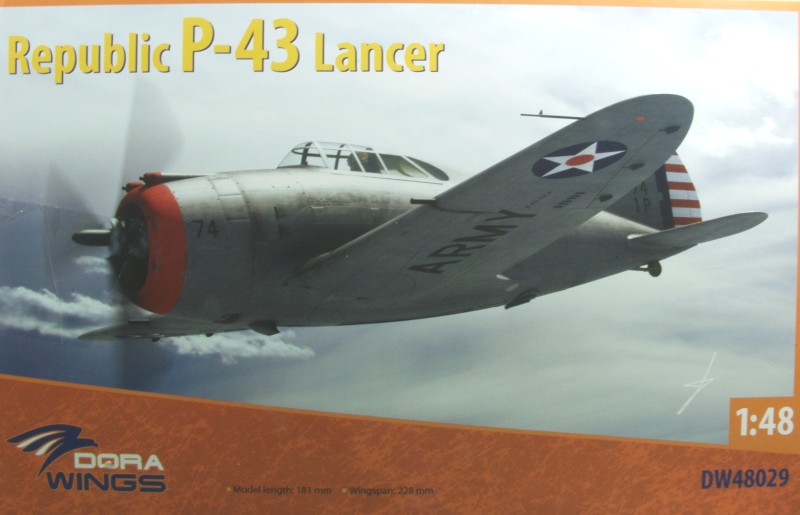
Dora Wings is a fairly recent new comer to the modeling world from the Ukraine. Even though they only have a short history they have been very prolific and seem to be concentrating mainly of types that the main stream manufactures have ignored and are making kits in 1/144, 1/72, 1/48 and 1/32. If interested check out their website here.
The kit comes in a medium sized top open type box with a thin top and thin corrugated bottom. The box is less than full allowing for some parts shifting. That said I found no damaged parts in my kit. All of the sprues were contained in one cellophane bag with a separate zip lock bag for the clear parts and another for the decals, PE fret and canopy masks. The parts are molded in a light grey plastic in spite of what they look like in some of my sprue photos. There are six altogether, all rather small. The surface detail consists of fine engraved panel lines with some raised detail and some restrained rivet or fastener detail. The surface is smooth and almost glossy. Flash was minimal for the most part but a few pieces had a bit that should be easy to remove. On the wings and fuselage all of the sprue attachment points, and there seem to be an abundance of them, are located on the mating surfaces. Some like this some don't I mixed on it at this time, they still require care in removal if you don't want to do filling later on. Mold alignment is good with only light parting lines on round parts. I did not find any surface defects on any of the airframe parts or any short shots on the other parts.
The cockpit is very well detailed for the scale and considering how much will be visible through the rather small cockpit opening. It consist of a floor, rear bulkhead, seat, two side panels to which no fewer than ten separate parts are added. The forward bulkhead has the gun breeches which you add to the cockpit side and a rather complicated looking motor mount which you assemble on the other side. Rudder pedals and a control stick round out the plastic parts. The instrument panel has options. A plastic panel has the instruments dials molded in for those who wish to just paint them. A separate part is supplied that is smooth and you can apply a decal to this then place the supplied PE instrument panel over it.
The landing gear are also very detailed. The
torque scissors are separate and there are tow separate struts plus an
actuation cylinder for each gear. The wheels and tires are in halves
and not weighted. The tail wheel strut is a two piece affair and the
wheel is a single piece.
The engine is also well detailed with both banks
of cylinders separate push rod spiders, a separate ignition harness
and crankcase with a separate magneto. A bunch of what look like oil
connector tubes for between the cylinders are included but look to be
quite fiddly to install and I'm not sure how visible they will be once
inside the cowling. The cowling is a four piece affair with two sides
a top and front piece. These may be fiddly as well. PE cowl flaps are
suppled as separate items. The propeller is one piece molding with a
separate spinner.
OK, lets look at the sprues. The first one,
sprue B contains the fuselage halves, two rear cowling halves, the top
cowl part, the forward bulkhead and two instrument panel parts. The
holes in the bulkhead are for the motor mounts. One note, there
is a parts map for the sprues and the instructions call out parts
using the sprue letter and a number but there are no numbers for the
parts on the sprues so you are on your own there.
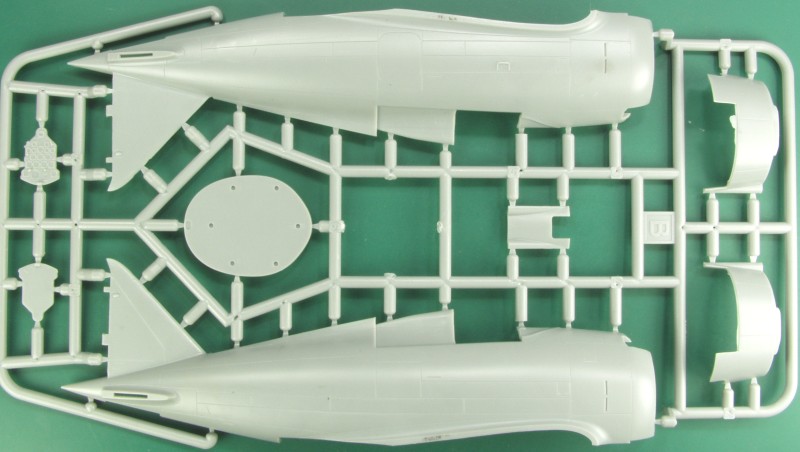
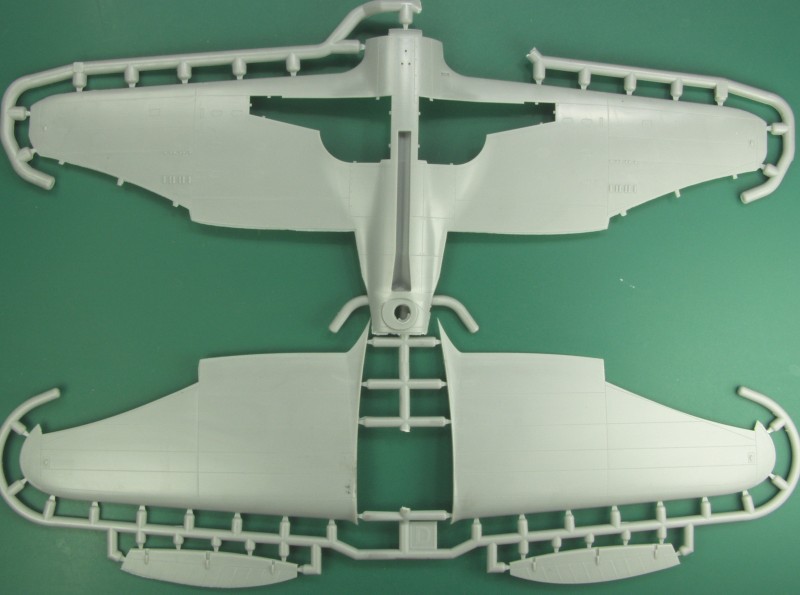
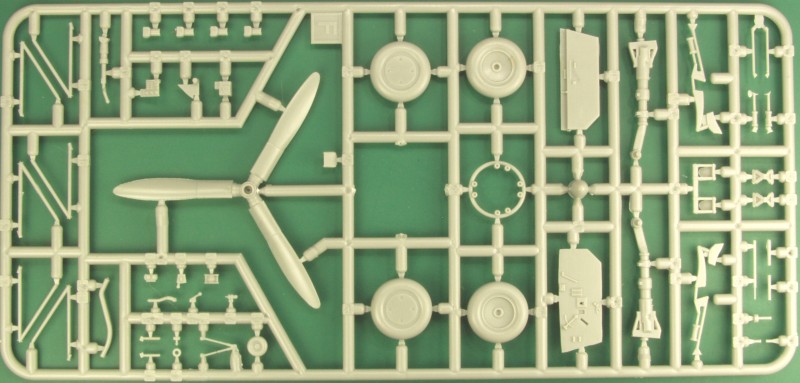
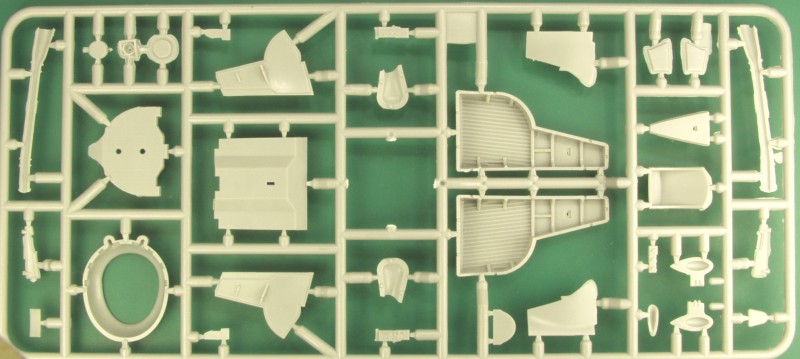
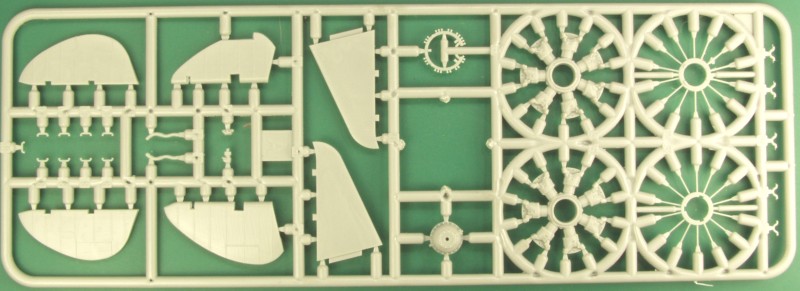
The
clear
parts are a little thicker than I like but clear and relatively
distortion free.
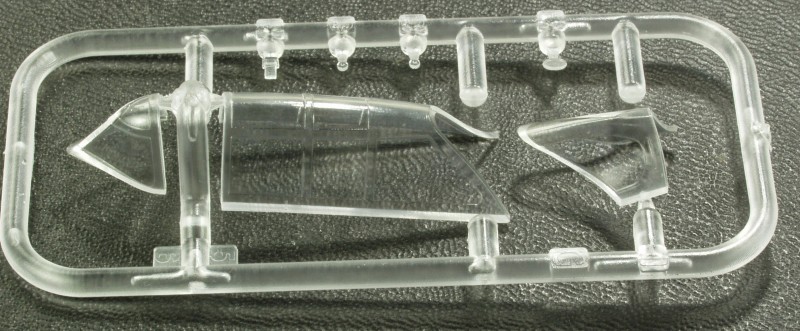
The
decals are printed by Decograph in the Ukraine, new to me so
time will tell how well the go down. The printing is in register
and all appear
to be quite opaque, except for the the numbers
and lettering there is minimal excess film. Markings are
supplied for four aircraft. The first one is identified only as
YP-43, USAAC, 1941, the second as s/n 40-2920 of the 55th
pursuit group, Portland AB, January 1942, the third s/n 41-6721,
1942 and the last as s/n 41-31496, August 1943.
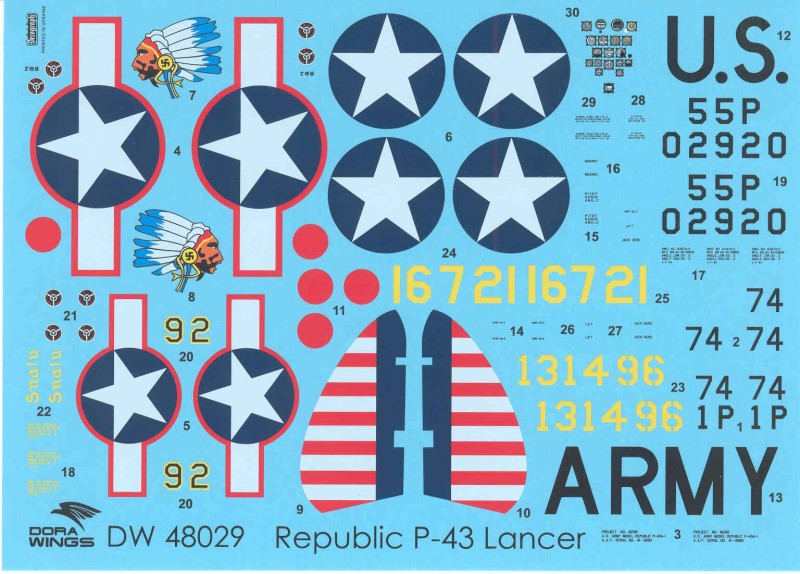
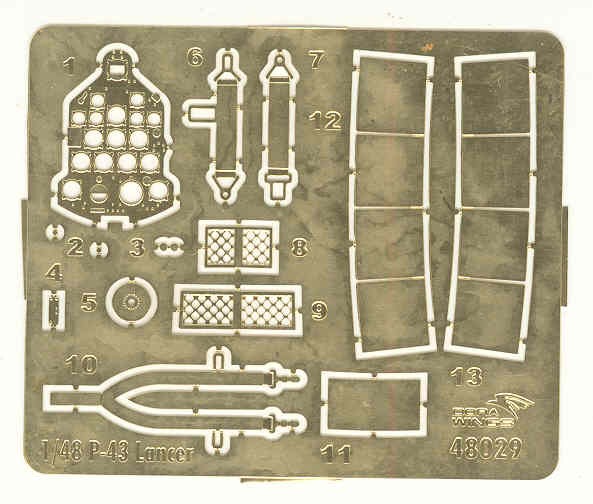
After Market Goodies
None that I have found at the time of this
review
Conclusions
This
is a limited run kit and as such uses no alignment pins. That
said its far above what one would expect from a limited run kit
from a few years ago. The kit is nicely detailed and with the
provided PE and mask kit should not need any after market. Treat
it as a limited run kit with lots of test fitting and it should
go together with minimal fuss. Dora Wings should be praised for
tacking some less well known subjects that the main stream
makers wouldn't even consider. This is my first kit from them
but I suspect it won't be the last.
Links to kit build or reviews
References
Wikipedia